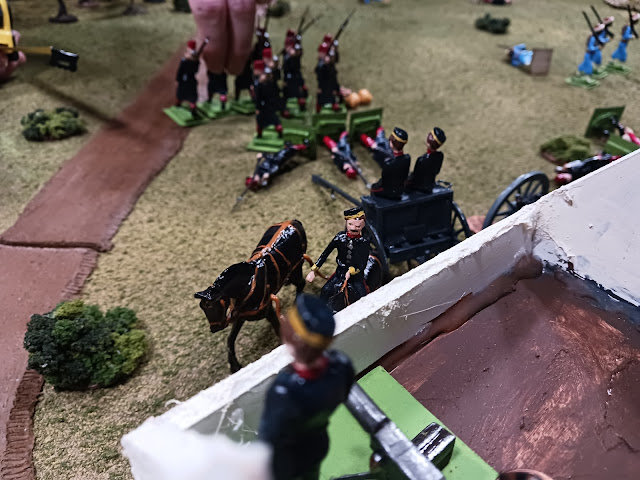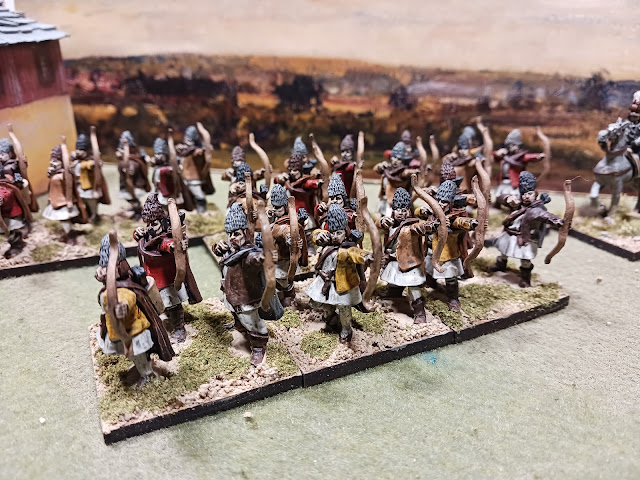 |
| The French with their 155s. |
Four 155mm Creusots, manufactured by Schneider in le Creusot, France, probably designed by Charles Ragon de Bange, and infamously used by the Boers in at the siege of Mafeking (the "Long Toms"), are all done (although three need more gloss varnish for extra shine). Also completed are additional converted crew figures, for both French and British.
 |
| British crew with their 155s |
Although I am a big fan of using old Britians spring-loaded guns, crewed by any spare infantry available (or even by cavalry as in Little Wars), steady home-casting has slowly but steadily changed my toy soldier armies from Army Red/Army Blue+Green alliances of convenience to something more in line with the forces from The Great War in England in 1897. When I started to drift in this direction, I initially considered securing nationally-appropriate artillery for both sides (so 75mms for the French, etc.), but sadly this involved investing in 1/35th scale kits, mostly, so I decided both sides could simply use the excellent Krupp guns by Armies Plastic for field artillery, with gussied-up limbers from BMC. When I wanted to add heavier guns as well, the decision was more about choosing a single gun for all nations that was in character with the period rather than specific to each nation. The Long Tom 155mm is pretty emblematic of Wells' pre-Great War era, and sadly there is not a 3d print readily available of the 4.7" naval gun (that I could find). Because they add so much more character to their armies, here's both the British and French artillery parks together...
Sadly I realize I need to roughly double the number of crew, so that each side could man both the two Krupps and two Creusots at the same time. Currently, they would have to choose two of the four guns and deal with it.
















































